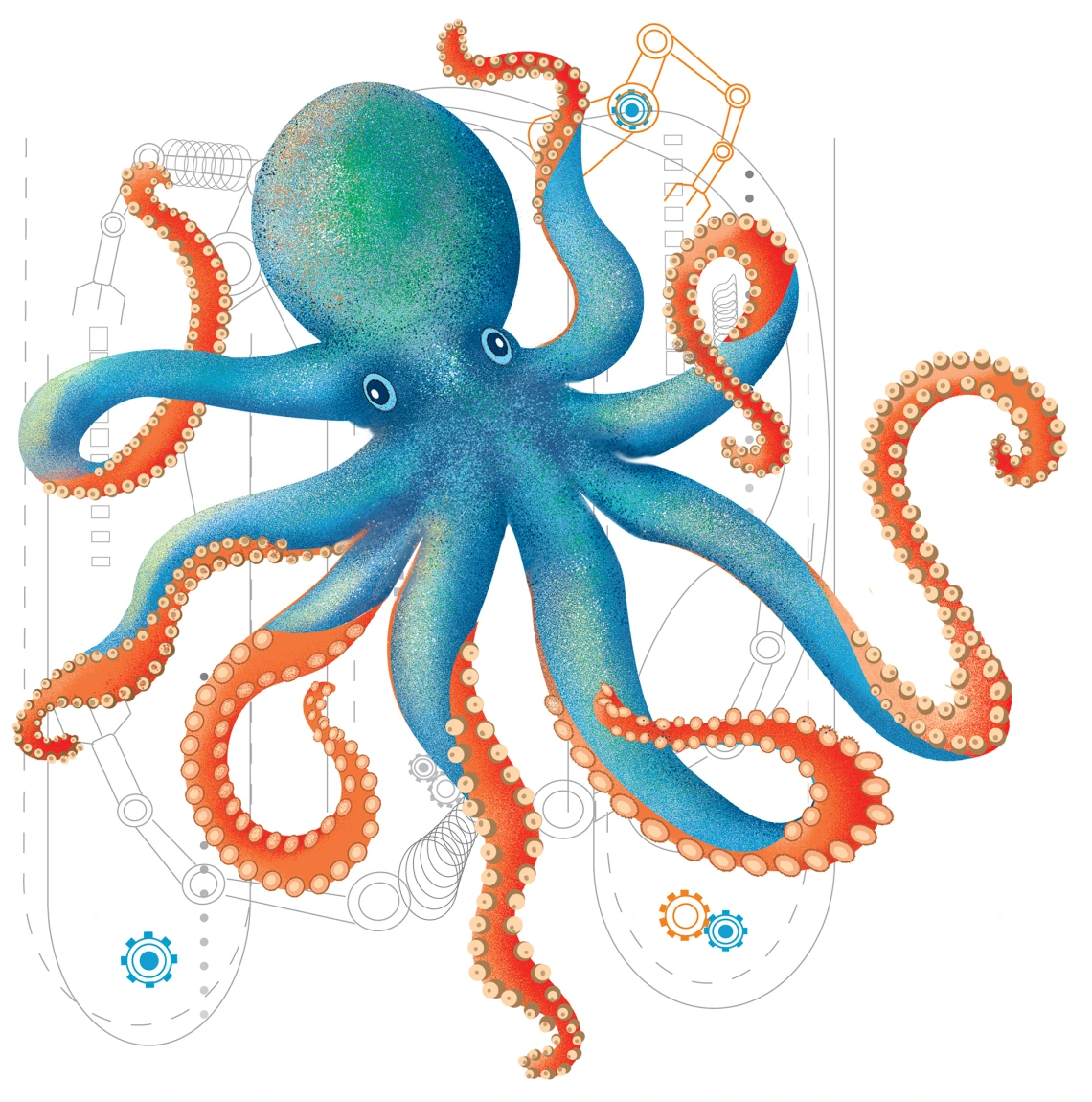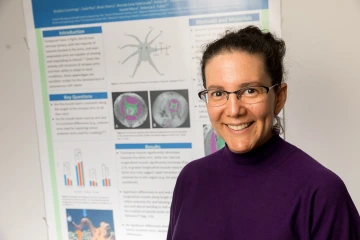Soft Brilliance
Tapping the secrets of the octopus to design agile, adaptable robots.

For all our technological prowess, humans still regularly turn to nature for answers.
It’s easy to understand why. Consider the octopus, for example. It’s an elegant creature that can do stunning things with eight arms — even when the arms are not attached. The aquatic invertebrates are completely soft, except for their fearsome beaks, allowing them to squeeze into unbelievably tight spaces.
And they are wicked smart.
“Octopuses are incredibly intelligent,” says Rebecca Fisher, professor and interim co-chair of the department of basic medical sciences and director of the Gross Anatomy Laboratory at the University of Arizona College of Medicine – Phoenix.
“They have depths of understanding and are incredibly good at solving problems. They are also very agile when manipulating objects.”
These intriguing attributes make the octopus the perfect prototype for a soft robot, capable of tasks ranging from ship inspections to manufacturing assembly. That is why the Office of Naval Research awarded a $2.1 million grant to researchers from the University of Arizona, Arizona State University and UCLA aiming to put the animal’s secrets to work.
Fisher is part of the team, along with a material scientist and four engineers. She calls the project “a natural marriage” between biology and robotics.
“We’re trying to design a robot that is inspired by the octopus, so we need to characterize the structure and functional relationships within the animal itself,” she says. “My role is to provide my colleagues on the engineering side with some fundamental data points on octopus anatomy — specifically, their nervous and muscular systems.”
Gathering those data points included putting octopus arms in an MRI scanner, she says, “to study the fine architecture of the nerves and muscles and how they are arranged in the arm.”
And what an architecture it is. Octopuses have nearly as many neurons as dogs — roughly 500 million — but, unlike dogs, their nervous system is more widely spread throughout their bodies.

Rebecca Fisher / Chris Richards photo
“Interestingly, octopuses have two-thirds of their neurons in their arms and one-third in the central brain,” Fisher says.
“It’s a very distributed nervous system. You can amputate the arm, and it is capable of sensing and responding to stimuli in ways similar to an intact arm. We think of them as having ‘smart’ arms.
“That’s why we chose this animal as a model for this particular robot, because it needed to be able to adapt to its environment without a central controller.”
This is essential for a robot built to do its own thing without constant human oversight. Researchers also are coming to understand how the arms bend and twist, abilities that will be integrated into the soft robotic design. The agile devices could be used underwater — to help repair boats, for example — or in dry conditions, where they might inspect shipping containers. A robot that mimics an octopus by squeezing into confined spaces could prove beneficial.
There’s still a lot to learn, of course. For instance, while previous studies have documented the complex muscle structure of an octopus arm, Fisher says it remains unclear whether those layers of muscle vary among the different arms. That’s important to know, because scientists have observed the animals using their front arms primarily for exploring and their rear arms for crawling. If the musculature is different from front to rear, it would go a long way toward explaining how octopuses navigate their world — and make for more nimble robots.

Rebecca Fisher with her students / Chris Richards photo
Thanks to Fisher’s work, project engineers like Hamid Marvi have a head start in understanding what makes an octopus tick. “They’ve been there for millions of years, with these mechanisms developing in nature,” says Marvi, an assistant professor of mechanical and aerospace engineering at Arizona State University. “That was a good starting point for us as engineers.”
Marvi, who calls his work “bio-inspired robotics,” says the first step was to learn “how the animal would be able to work with these eight arms doing dexterous tasks. Each arm has hundreds of sensors, and each of those sensors collects a lot of information in real time, yet they somehow manage to process all that data.” His hunch is that the brain does not do all the heavy lifting. Instead, “some low-level decisions are being made locally,” he says. In other words, the individual arms are working on their own.
Translating those abilities into robotics is no small feat. “As people, we can take these things for granted, because we have such a complex design and a fascinating control system already built in” to our bodies, says Marvi.
“But when you want to design a system — a robotic system, a machine that can do even simple tasks — then you see the sort of complexities and challenges that you are dealing with.”
Even the simple capacity to unscrew a jar is no trivial feat for a robot. “Actually, it’s a pretty complex task,” Marvi says. Yet an octopus in New Zealand was witnessed doing just that — in under a minute.
For engineers, it’s a tough act to follow. But if they succeed, the robotic possibilities are endless.
